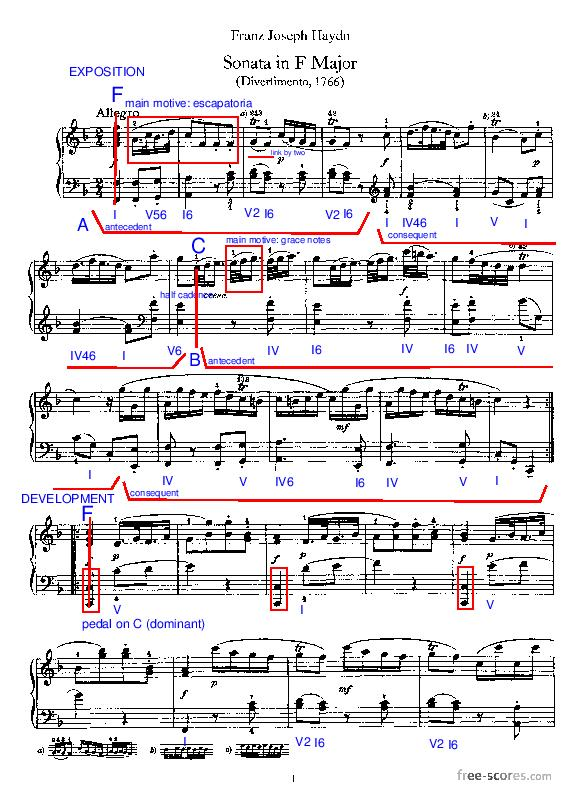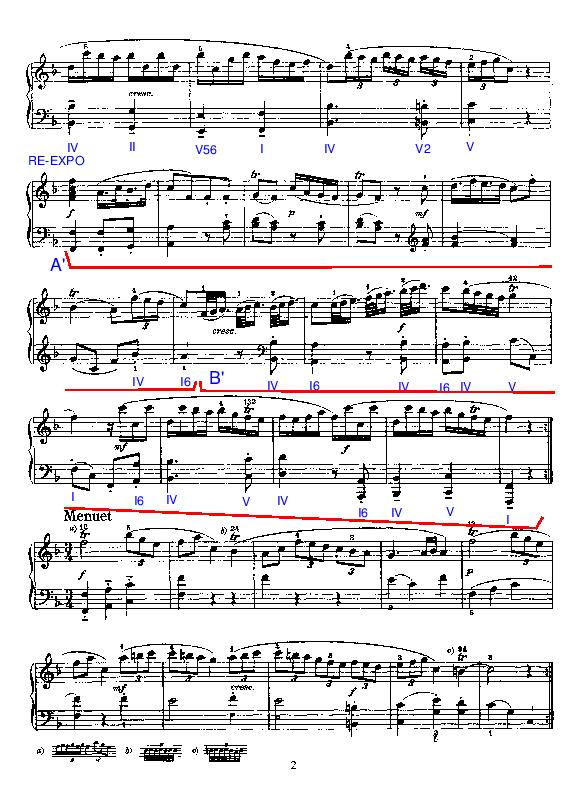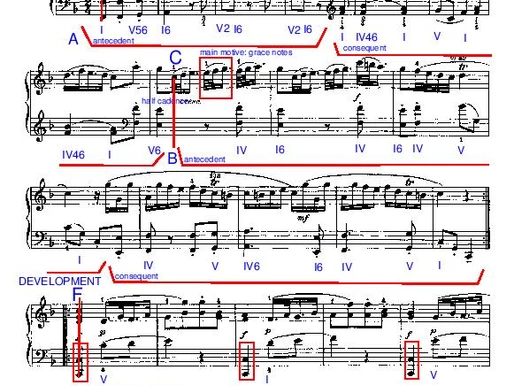Haydn Sonatas, Uncategorized
Haydn Sonata Hob. XVI:9 in F – Allegro
Harmonic and Composition Analysis

EXPOSITION
This is a classic example of sonata form in its simplest expression.
“A”, in F, states the tonic using a full bodied chord to begin with. The main motive is defined by the alternation of dotted semi-quavers with semi-demi-quavers followed by slower passed quavers. The accompaniment in the bass is eminently contrapuntal featuring a clear bass line with its own personality that strongly supports the much more fluent speech on the treble. Articulation-wise, the “link by two”, which is a main stylistic feature anyway, is particularly frequent; its main role: resolution appoggiatura.
“A” half-cadences to C, leaving the grounds ready for “B” to continue without the need of any further episode. In “B”, the escapatoria -main ornament in “A”- is replaced by “runaways” in the shape of three ascending grace notes. This resource is exploited in full in “B’s” antecedent. “B’s” consequent, on the contrary, is defined by the clean alternation of octaves and scales. Its main feature: the emphasis on the IV degree on the first beat of each bar. It is interesting how this insistence on the IV works as a suspension of the authentic cadence that is ought to happen by the end of the exposition.
DEVELOPMENT
This very short development starts in the dominant and exploits the use of “A’s” main motive. The use of a dominant pedal note/octave in the bass from bar 17 is typical of the style and constitutes the easiest way to turn C from being the tonic into being the dominant of F. The variations in the development are very shy. Most of the action happens around condensing the motive. Immediately after this short variation, we come back to what could be called the second half of “A’s” antecedent, plainly exposed in its original key. The use of “B’s” consequent immediately after simplifies the development quite dramatically and brings the music back to its harmonic roots. This last episode explores the use of the II and adds triplets towards its half cadential ending. Both features are seen for the first time in the development. Their usage goes in line with the need of exploring, in this development sonata section, the boundaries of the main themes.

RE-EXPOSITION
This re-exposition constitutes a very clear and simple transposed repetition of what we’ve seen in the exposition. No major changes apart from the usage of a triplet in bar 34 which confirms the consistent use of this ornament as seen on bars 27 and 28 of the development, this is an stylistically necessary repetition.
CONCLUSION
Even when this is a very simple sonata movement, it gathers all the features needed to categorize it as a proper sonata/sonatina movement. It is remarkable how quickly the form consolidated even in a sonata as early as this one.
#HaydnProject #Haydnproject

